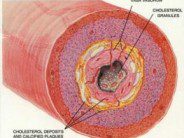Most of the pathological changes that occur during the early stages and progression of Alzheimer’s disease take place in the brain. There is evidence to suggest that changes also occur outside the brain, particularly in the eyes. The accumulation of beta amyloid plaque around the neurons in the brain is thought to contribute to the cognitive decline that is a hallmark of dementia of the Alzheimer’s type. We do not currently have a definitive diagnostic test for the disease, but brain imaging with PET scans can help in the early diagnosis of the condition by identifying beta amyloid plaque burden in the brain. Despite the utility of this test, it is complex and expensive and therefore not widely available. Researchers from Australia have presented preliminary data in Paris, France at the Alzheimer’s Association International Conference that shows a cheap and simple eye test could help in the early diagnosis of Alzheimer’s dementia. The research was presented by Shaun Frost, MSc who is a doctoral student in the e-Health Research Center which is operated by the Australian Commonwealth Scientific and Industrial Research Organization. The researchers used retinal scans from participants who were part of the Australian Imaging, Biomarker and Lifestyle study. There were 146 participants in the current pilot study, and they were classified as being healthy (110 participants), having mild cognitive impairment (13 participants), or having Alzheimer’s dementia (13 participants). The retinal scans were used to measure both arterial and venous diameters and then calculate the arterio-venous ratio (AVR). The preliminary results have shown that the AVR correlated with beta amyloid plaque burden in the brain as determined by PET imaging studies of the participants. The differences in the AVRs are primarily due to retinal venous thickness which becomes thinner in Alzheimer’s dementia with an indirect correlation with the beta amyloid plaque burden in the brain. Of particular importance was the fact that even in cognitively normal participants, the AVR correlated with beta amyloid plaque burden in the brain. This implies that this simple and cheap eye test can identify individuals who have beta amyloid plaque in the brain before the onset of cognitive deficits. This inexpensive and noninvasive test would not be a definitive, stand alone diagnostic procedure but could be used for screening patients before employing more expensive and complex diagnostic modalities.
Watch the YouTube video entitled “Possible New ‘Eye Test’ for Alzheimer’s” below:
CLICK HERE for the Alzheimer’s Association International Conference reference – Shaun Frost et al. “Retinal Vascular Parameters as Biomarkers for Alzheimer’s Disease” presented at AAIC 2011, Paris, France










 DrSamGirgis.com is a blog about medicine, nutrition, health, wellness, and breaking medical news. At DrSamGirgis.com, the goal is to provide a forum for discussion on health and wellness topics and to provide the latest medical research findings and breaking medical news commentary.
DrSamGirgis.com is a blog about medicine, nutrition, health, wellness, and breaking medical news. At DrSamGirgis.com, the goal is to provide a forum for discussion on health and wellness topics and to provide the latest medical research findings and breaking medical news commentary.
{ 1 comment… read it below or add one }
Wow, this is pretty amazing.